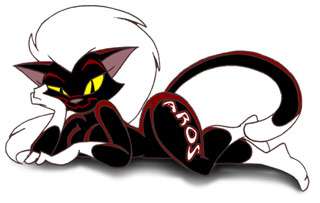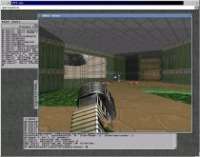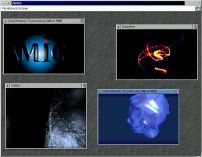

Developer: AROS
Project began: 1995 |

The liquidation of Commodore in 1994 was a turning point in the
Amigas history. Many feared that the Amiga market would collapse
and it would be relegated to a niche role as a door stop. The
liquidation demonstrated the Amiga users' and developers' reliance
upon Commodore. The Amiga OS was, and has always been,
closed-source, preventing anyone updating the OS. At the time the
open source initiative and Linux were becoming recognizable
alternatives to the status quo. Several small groups' of Amiga
users on the internet coordinated their efforts to create an
open-source Amiga operating system that was not controlled by a
incompetent, restrictive parent company. The most popular of these
was the AmigOS project, which gained brief attention in Amiga User
International during 1994. However, bitter flame wars on the
feasibility of such an OS tore the project apart and the dream of
an open-source Amiga OS disappeared.
During the fourth quarter of 1995, Aaron Digulla attempted to get
the project moving again, by sending an RFC (Request For Comment)
to the AmigOS mailing list. He suggested that a minimum
specification list should be defined, allowing the creation of a
basic open source OS. Once this stage had been completed, the group
could decide if multi-processing, resource tracking, and other
features missing from the official AmigaOS, could be implemented.
After some discussion it was decided that the group should create a
portable version of OS3.1. The Amiga Replacement Operating System
was born...
Amiga Research Operating System
In the 5+ years since these events the Amiga has been officially
resurrected and killed many times. The only certainty during this
time was the possibility that an open-source Amiga OS could be
created that was not subject to restrictions. Several changes have
been made that will ensure AROSs portability. AmigaOS modules that
access the Amiga hardware (graphic.library, keyboard.device,
serial.device, etc.) have been changed in AROS to hardware
independent drivers.
 
The current version is binary compatible when installed on existing
Amigas, while on other systems it provides source-level
compatibility. Current software simply needs recompiling on another
processor. There are versions available for 680x0, 80386+, and
PowerPC processors running under AmigaOS or a Unix variant (Linux
i386/m68k and FreeBSD i386). These are capable of displaying an
Intuition screen under XWindows. This is visually similar to the
UAE Amiga emulator, but is even more impressive when it realized
that the code in compiled for the host CPU, rather than
emulated.
An effort has also been made to create a standalone x86 OS, without
the need to install Unix. At the moment the x86 native version
includes versions of several libraries: Exec, Graphics, Layers, Dos
and Intuition. There is also a VGA graphics driver that sits under
the graphics.library and PS/2 mice and keyboards work under the
input device. However, a file system is not included yet (due to a
lack of space in the loader). Future plans will allow the user to
flash AROS in the BIOS, turning the PC into a ready-made Amiga
clone.
AROS has continued to influence several projects in the Amiga
market. It has played a key role in optimizing UAE and, more
recently, Haage & Partner used parts of the code in AmigaOS 3.9. In 2000, the AROS team formed an
alliance with the Open Amiga Foundation.
There has been an influx of support for the new OS, including
many industry figures, including David Pleasance (former managing
director of Commodore UK), who was going to include it with the
Amiga if his management buyout of Commodore International had been
successful. Petro Tyschtschenko, Jeff Schindler, Bill McEwen, and
Fleecy Moss have also been supportive of their efforts, but refuse
to embrace it on an official level.
AROS has continued to mature, getting better every year. The
next five years will be an interesting for the project, when it
will compete for mind share with MorphOS, AmigaOS
3.9, and Amiga DE. It offers the
advantage of a mature, portable 'Classic' Amiga-compatible
operating system that is unrestricted by the political agenda or
market share issues that affect the other two contenders. Could
this be your next Amiga?
Try it for yourself!
Matt Parsons has very kindly allowed Amiga History Guide to host a
copy of the x86 AROS disk image. Once downloaded, use the DOS
program Rawrite.exe to write the image to a blank formated PC disk.
Download AROS disk
image (2.5MB)
AROS instructions
External Links
Matt Parson's AROS
Page
BACK
Last Update: 1/11/2001
|













